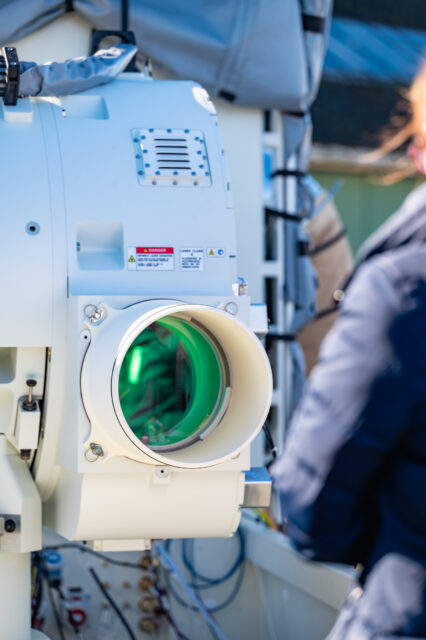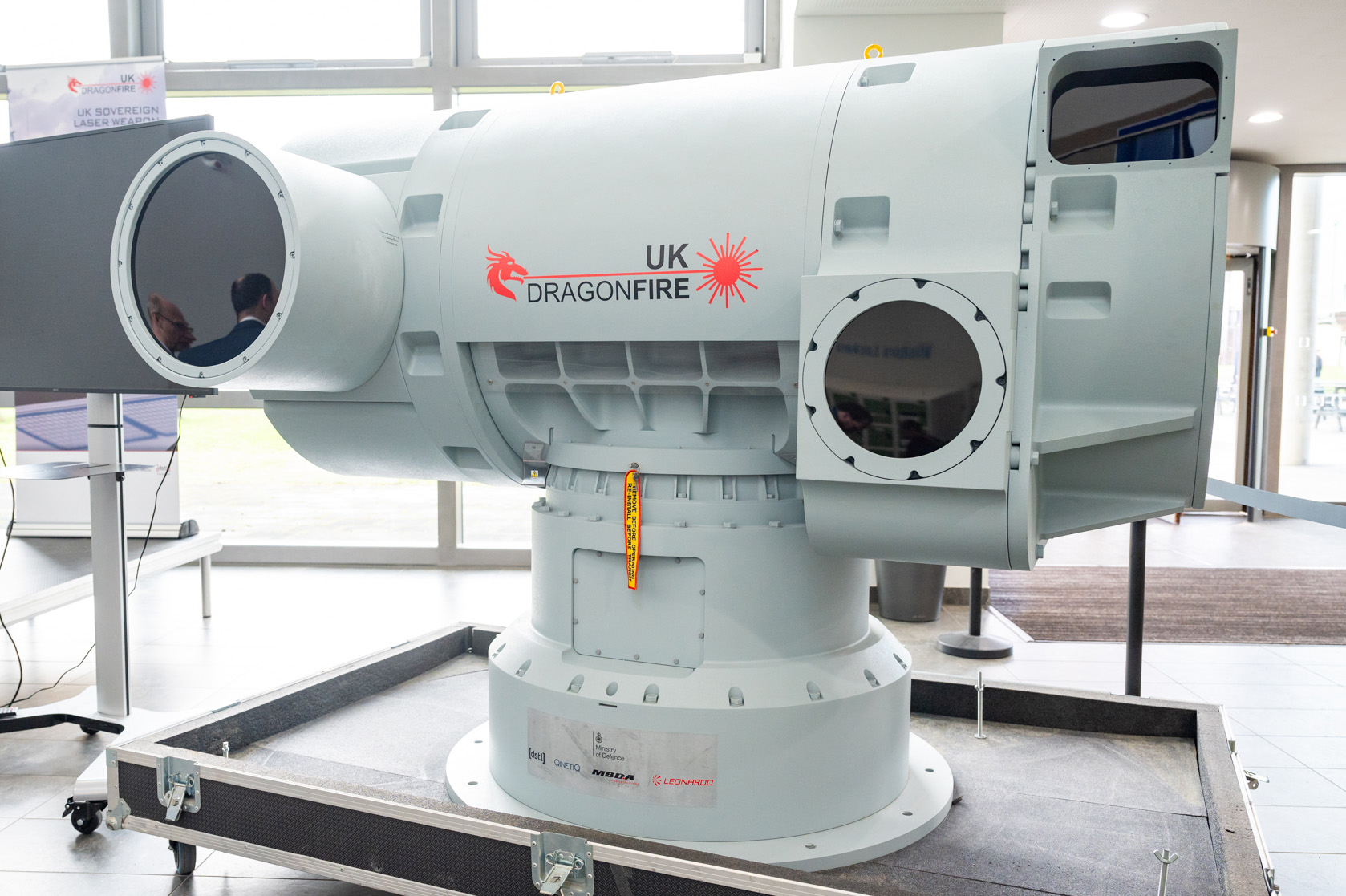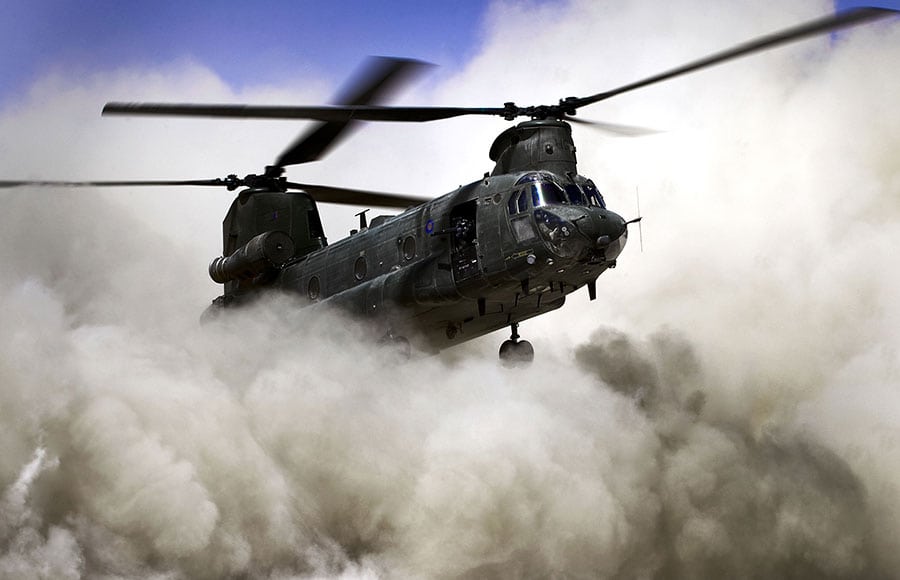Project Description
In the not-too-distant past, the idea of laser beams being used as weapons in warfare would have seemed confined to science fiction. However, with the emergence of cost effective, high energy innovative technologies, the use of Laser Directed Energy Weapons (LDEW) is fast becoming a reality for our future forces.

The move towards using lasers has been sped up by the threats posed by drones that are increasingly used in modern warfare because they are inexpensive to use and can be packed with explosives as seen both in Ukraine and in Red Sea Houthi militants.
In response to this change, one of the programmes looking at the use of LDEWs in defence is the DragonFire Minimum Deployable Capability (MDC) which is being delivered by our Direct Energy Weapons team within Lethality and Protect, as part of a joint enterprise alongside MOD Strategic Programmes, Dstl the Royal Navy and industry.
The weapon system, which is being developed for use on Type 45 warships by the Royal Navy, works by shooting high power laser over long ranges, engaging targets at the speed of light before using the intense beam to cut through the target and destroy it.
It uses UK Coherent Beam Combination (CBC) laser technology, which has higher beam quality and improved accuracy in contrast to other emerging LDEW technology across the globe. This sovereign technology has been developed by Dstl and industry partners MBDA, Leonardo and QinetiQ.
Whilst the technology is still developing, recent trials saw the weapon successfully fire at a target with such precision that, in real terms, was the equivalent of hitting a £1 coin from a kilometre away. The beam can also take down drones at a distance of more than three miles.


Hear from the Minister for Defence Procurement and Industry:
Maria Eagle, Minister for Defence Procurement and Industry, said:
“The Ministry of Defence has committed to accelerating DragonFire Laser Directed Energy Weapons into operational capability by equipping four Royal Navy destroyers with this world leading system.
“By doing this we are bringing laser technology to the Navy around five years faster than previously planned, which will protect our Armed Forces, and let us make continual improvements on areas like integration, software, and overall lethality.”
Whilst more work is needed to develop and trial this remarkable capability current plans the roll-out to across the T45s is expected to begin from 2027.








